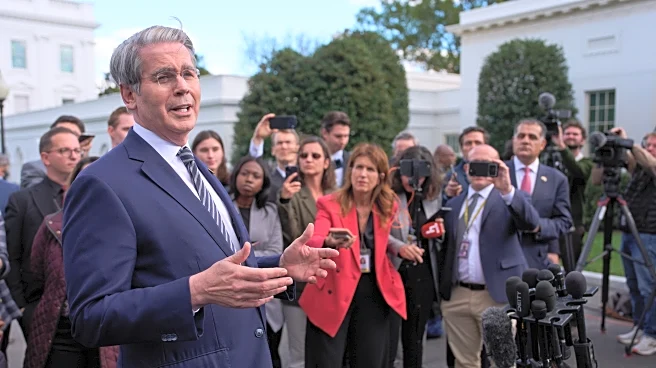What's Happening?
The U.S. government's gross national debt has surpassed $38 trillion, marking the fastest accumulation of debt outside the COVID-19 pandemic. This increase occurs during a federal government shutdown,
highlighting fiscal challenges. The debt growth is driven by deficit spending, rising interest costs, and the economic impact of the shutdown. The Government Accountability Office outlines the impacts of rising debt, including higher borrowing costs and lower wages.
Why It's Important?
The rapid increase in national debt poses significant risks to the U.S. economy. Higher interest payments could constrain economic growth and increase borrowing costs for households and businesses. The ongoing government shutdown exacerbates these challenges by delaying economic activity and fiscal decision-making. The situation raises concerns about fiscal sustainability and the long-term global standing of the U.S. dollar. The debt trajectory could lead to job and income losses, affecting economic stability.
What's Next?
The government shutdown continues to impact fiscal policy, with no resolution in sight. Lawmakers face pressure to address the debt issue and implement reforms to ensure fiscal sustainability. The Treasury Department's future actions and potential policy changes will be crucial in managing the debt and mitigating its economic impact.
Beyond the Headlines
The debt crisis highlights broader issues of fiscal responsibility and governance. The political gridlock and recurring shutdowns underscore the need for effective fiscal management and bipartisan cooperation. The situation also raises ethical questions about intergenerational equity and the burden of debt on future generations.












